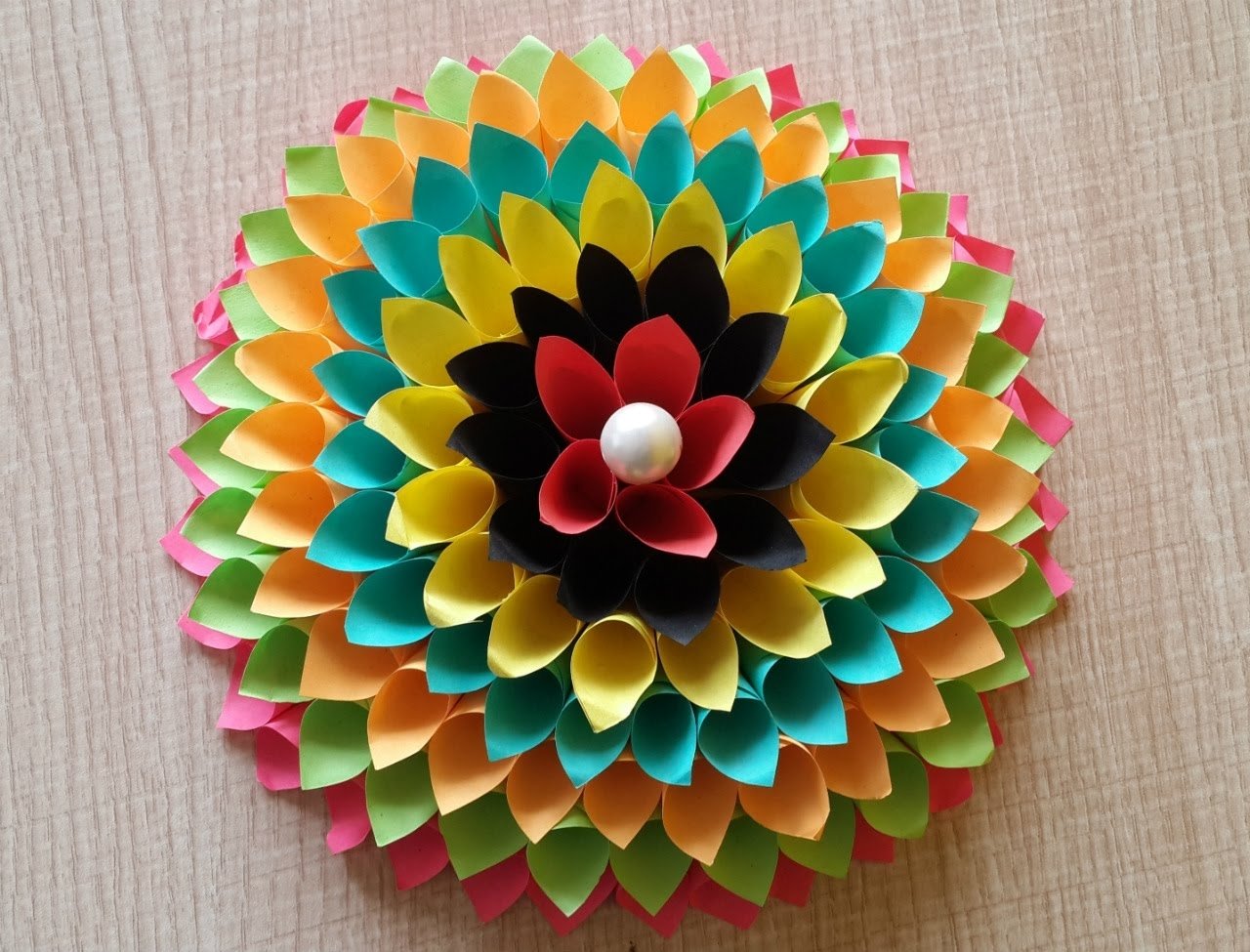Arts and crafts ideas for adults offer a fantastic way to unwind, express yourself, and create something beautiful. Whether you’re a seasoned artist or just starting out, there’s a project waiting to spark your imagination. From DIY home decor to textile crafts, paper crafts, jewelry making, painting, and more, the possibilities are endless.
This guide explores a wide range of creative pursuits, providing step-by-step instructions, tips, and inspiration to help you embark on your crafting journey. Get ready to discover new skills, explore different mediums, and unleash your inner artist.
Paper Crafts: Arts And Crafts Ideas For Adults

Paper crafts offer a versatile and accessible way to unleash your creativity. From simple folds to intricate designs, paper provides a blank canvas for endless possibilities. Whether you’re looking for a relaxing hobby, a unique way to express yourself, or a fun activity for all ages, paper crafts have something to offer.
Origami Animals
Origami, the Japanese art of paper folding, is a captivating way to transform a simple sheet of paper into stunning animal creations. With precise folds and a little patience, you can create a menagerie of origami animals that will delight and amaze.
Here’s a step-by-step guide to creating a simple origami crane:
1. Start with a square sheet of paper. Choose a vibrant color or a patterned paper for a unique touch.
2. Fold the paper in half diagonally. This will create a triangle.
3. Fold the top point of the triangle down to the base. This will create a smaller triangle at the top.
4. Fold the bottom corners up to the top point. These folds will create the wings of the crane.
5. Fold the top flap down. This will create the head and neck of the crane.
6. Fold the wings down. Adjust the folds to create the desired shape and size of the wings.
7. Fold the head and neck. You can experiment with different folds to create different beak shapes and head positions.
Once you’ve mastered the origami crane, you can explore other animal designs. There are countless origami patterns available online and in books, from graceful butterflies to playful puppies. With practice, you can create an entire origami zoo!
Personalized Paper Quilling Cards
Paper quilling, also known as paper filigree, involves rolling strips of paper into coils and shaping them into intricate designs. This technique is perfect for creating personalized cards that are both beautiful and unique.
Here’s a step-by-step guide to creating a simple paper quilled card:
1. Gather your materials. You’ll need quilling paper (available in various colors and patterns), a quilling tool, a ruler, scissors, glue, and a card base.
2. Create basic coils. Using the quilling tool, roll strips of paper into tight coils. Secure the end of the strip with a small amount of glue.
3. Shape the coils. Once the coils are dry, you can shape them into different forms, such as circles, teardrops, and hearts.
4. Arrange the coils. Use glue to attach the shaped coils to the card base, creating a desired design.
5. Add embellishments. You can add beads, glitter, or other decorative elements to enhance your card.
For a personalized touch, create a design that reflects the recipient’s interests or hobbies. For example, you could create a quilled flower for a nature lover or a musical note for a music enthusiast.
Unique Papercraft Ideas for Special Occasions
Paper crafts are a wonderful way to add a personal touch to special occasions. Here are some unique papercraft ideas for birthdays, holidays, and other celebrations:
* Paper flower bouquets: Create a vibrant and long-lasting bouquet of paper flowers. You can find numerous tutorials online for creating different types of flowers, from delicate roses to cheerful sunflowers.
* Paper lanterns: Add a touch of whimsy and light to any celebration with paper lanterns. You can create lanterns in various shapes and sizes, using different colors and patterns of paper.
* Paper garlands: Decorate your space with festive paper garlands. You can create garlands with paper circles, triangles, or even cut-out shapes.
* Paper gift boxes: Surprise your loved ones with personalized paper gift boxes. You can find free templates online for creating boxes in various shapes and sizes.
* Paper invitations: Design unique paper invitations for your special events. You can use paper quilling, origami, or other paper crafting techniques to create eye-catching invitations.
These are just a few ideas to get you started. With your creativity and imagination, you can create countless paper crafts for any occasion.
Sculpting and Pottery
Sculpting and pottery are captivating art forms that allow you to express your creativity through the manipulation of clay. Whether you prefer the tactile experience of shaping a unique sculpture or the practicality of crafting functional ceramic pieces, there’s a world of possibilities waiting to be explored.
Designing a Simple Ceramic Sculpture Using Clay Molding Techniques
Clay molding is a versatile technique that allows you to create intricate sculptures with unique textures and forms. This section will guide you through the process of designing and crafting a simple ceramic sculpture using basic molding techniques.
- Gather your materials: You will need clay, a sculpting tool, a rolling pin, a work surface, and a container of water.
- Prepare the clay: Knead the clay until it is soft and pliable. You can add water if the clay is too dry.
- Roll out the clay: Use the rolling pin to roll out the clay to a desired thickness.
- Create the sculpture: Use the sculpting tool to carve out your desired design. You can use various techniques like pinching, coiling, or adding details.
- Smooth the surface: Use your fingers or a damp cloth to smooth out the surface of the sculpture and remove any fingerprints.
- Allow the sculpture to dry: Place the sculpture in a well-ventilated area to air dry. The drying time will vary depending on the thickness of the clay and the humidity levels.
- Optional: Once the sculpture is completely dry, you can fire it in a kiln to harden it. You can also glaze the sculpture to add color and shine.
Creating a Functional Ceramic Mug From Scratch
Creating a functional ceramic mug from scratch is a rewarding experience that allows you to personalize your everyday beverageware. This section will guide you through the process of crafting a mug from clay using basic pottery techniques.
- Prepare the clay: Knead the clay until it is soft and pliable. You can add water if the clay is too dry.
- Form the mug: Use your hands or a pottery wheel to shape the clay into a cylindrical form for the mug’s body.
- Create the handle: Roll a coil of clay and attach it to the mug’s body, shaping it into a comfortable handle.
- Smooth the surface: Use your fingers or a damp cloth to smooth out the surface of the mug and remove any fingerprints.
- Trim the edges: Use a trimming tool to create a clean and even edge around the lip of the mug.
- Allow the mug to dry: Place the mug in a well-ventilated area to air dry. The drying time will vary depending on the thickness of the clay and the humidity levels.
- Optional: Once the mug is completely dry, you can fire it in a kiln to harden it. You can also glaze the mug to add color and shine.
Glazing and Firing Ceramic Pieces in a Home Kiln
Glazing and firing are crucial steps in the pottery process, adding durability and aesthetic appeal to your ceramic pieces. This section will guide you through the process of glazing and firing ceramic pieces in a home kiln.
- Choose a glaze: There are various types of glazes available, each with its own unique properties and characteristics. Consider the desired color, finish, and level of durability when selecting a glaze.
- Prepare the glaze: Most glazes require mixing with water to achieve the correct consistency. Follow the manufacturer’s instructions for mixing the glaze.
- Apply the glaze: Use a brush, sponge, or dipping technique to apply the glaze evenly to the ceramic piece. Ensure that the glaze is applied to all surfaces that will be visible.
- Allow the glaze to dry: Place the glazed ceramic piece in a well-ventilated area to allow the glaze to dry completely. The drying time will vary depending on the glaze and the humidity levels.
- Fire the ceramic piece: Once the glaze is dry, you can fire the ceramic piece in a home kiln. The firing temperature will vary depending on the glaze and the type of clay used. It is important to follow the manufacturer’s instructions for firing the ceramic piece.
- Cool the ceramic piece: Once the firing process is complete, allow the ceramic piece to cool slowly in the kiln. Rapid cooling can cause the ceramic piece to crack.
Upcycling and Repurposing
Upcycling and repurposing are excellent ways to give new life to old items, reducing waste and creating unique, personalized pieces. This process involves transforming unwanted materials into something useful and aesthetically pleasing, allowing for a creative outlet while promoting sustainability.
Repurposing Old Clothing
Repurposing old clothing can be a fun and rewarding way to give your wardrobe a refresh. You can transform old t-shirts into tote bags, pillowcases, or even patchwork quilts. Jeans can be repurposed into stylish denim skirts, shorts, or even bags. Here are some creative ways to repurpose old clothing:
- T-shirts: Cut off the sleeves and hem to create a tank top. Cut the bottom portion into strips and braid them to create a unique belt. Or, use old t-shirts to make a no-sew patchwork quilt by cutting them into squares and sewing them together.
- Jeans: Cut off the legs to create denim shorts. Use the denim fabric to create a stylish tote bag or a patchwork denim jacket. You can also cut the legs into strips and braid them to create a unique belt or headband.
- Sweaters: Cut the sleeves off a sweater and use the fabric to create a cozy throw blanket or a pair of stylish fingerless gloves. You can also repurpose the body of the sweater to create a pillowcase or a cozy cushion.
Designing Furniture with Salvaged Materials
Salvaged materials can be used to create unique and stylish furniture pieces. For example, old pallets can be transformed into coffee tables, bookshelves, or even headboards. Reclaimed wood can be used to build sturdy benches, dining tables, or even a complete set of furniture.
Upcycling Plastic Bottles, Arts and crafts ideas for adults
Plastic bottles are a common source of waste, but they can be easily upcycled into decorative items. Here are some tips for upcycling plastic bottles:
- Cut and decorate: Cut the top and bottom off plastic bottles to create cylindrical shapes. You can then decorate these shapes with paint, fabric, or other embellishments to create unique vases, planters, or even candle holders.
- Create storage solutions: Cut the top off a plastic bottle and decorate the outside. You can then use it as a storage container for small items, such as pens, pencils, or craft supplies.
- Make wind chimes: Cut the bottom off plastic bottles and decorate them with paint or markers. Then, thread them onto a string or wire to create a whimsical wind chime.
Last Recap
As you delve into the world of arts and crafts, remember that the most important ingredient is your own unique creativity. Experiment, explore, and don’t be afraid to make mistakes – they are often the stepping stones to new discoveries. Whether you’re seeking relaxation, a new hobby, or a way to express yourself, arts and crafts offer a fulfilling and rewarding experience. So, grab your supplies, unleash your imagination, and let the creative journey begin!
Arts and crafts projects are a great way for adults to relax and express their creativity. From painting to knitting, there are endless possibilities to explore. If you’re looking for festive inspiration, check out this article on Make Your Own Christmas Decorations: DIY Joy for the Holidays.
It offers fun and easy ideas for creating unique decorations for your home, adding a personal touch to your holiday celebrations.




